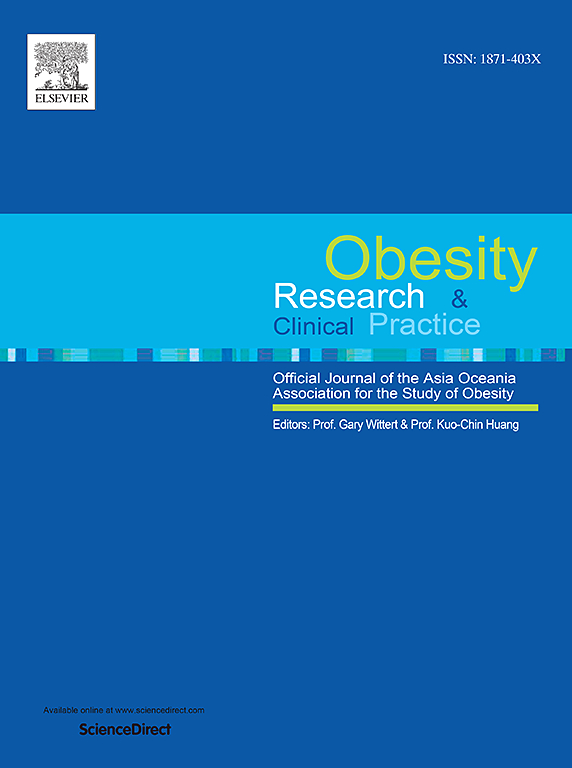Attention to food in adolescents with obesity: No evidence for increased attentional engagement or reduced attentional disengagement
IF 2.5
4区 医学
Q3 ENDOCRINOLOGY & METABOLISM
引用次数: 0
Abstract
Objective
This study examined differences in attentional engagement and disengagement bias regarding visual food stimuli between adolescents with a healthy weight versus adolescents with obesity.
Method
Participants were adolescents aged 12– 23, with obesity (n = 51, adjusted BMI [(actual BMI/Percentile 50 of BMI for age and gender) × 100]) between 143 % and 313 %, and with a healthy weight (n = 51), adjusted BMI between 75 % and 129 %. Attentional bias (AB) was indexed by the Attentional Response to Distal vs. Proximal Emotional Information (ARDPEI) task.
Results
Unexpectedly, results showed moderately strong evidence that individuals with obesity did not show more attentional engagement to food cues than individuals with a healthy weight, and moderately strong evidence that individuals with obesity did not show more difficulty in disengaging from food cues than individuals with a healthy weight.
Conclusions
Findings provide no evidence to support the view that in adolescents AB to food cues plays a role in obesity. One conclusion could be that AB to food cues does not play a role in obesity. Yet, future studies should examine whether this might be different for adults or when satiety is well-controlled.
肥胖青少年对食物的注意力:没有证据表明增加了注意力投入或减少了注意力脱离。
目的:本研究探讨了健康体重青少年与肥胖青少年在视觉食物刺激下的注意投入和脱离偏差的差异。方法:参与者12 - 23岁的青少年肥胖(n = 51岁,调整身体质量指数(BMI(实际年龄和性别/ BMI百分50)× 100])143年至313年 %和 %,和一个健康的体重(n = 51),调整后的BMI 75 % 129 %之间。注意偏倚(AB)通过对远端情绪信息和近端情绪信息的注意反应(ARDPEI)任务进行索引。结果:出乎意料的是,结果显示中等强度的证据表明肥胖个体没有比健康体重的个体表现出更多的对食物线索的注意,中等强度的证据表明肥胖个体在脱离食物线索方面没有比健康体重的个体表现出更大的困难。结论:研究结果没有提供证据支持青少年对食物线索的AB在肥胖中起作用的观点。一个结论可能是,AB对食物的暗示并没有在肥胖中发挥作用。然而,未来的研究应该检查这是否会对成年人有所不同,或者当饱腹感得到很好的控制时。
本文章由计算机程序翻译,如有差异,请以英文原文为准。
求助全文
约1分钟内获得全文
求助全文
来源期刊

Obesity research & clinical practice
医学-内分泌学与代谢
CiteScore
7.10
自引率
0.00%
发文量
80
审稿时长
49 days
期刊介绍:
The aim of Obesity Research & Clinical Practice (ORCP) is to publish high quality clinical and basic research relating to the epidemiology, mechanism, complications and treatment of obesity and the complication of obesity. Studies relating to the Asia Oceania region are particularly welcome, given the increasing burden of obesity in Asia Pacific, compounded by specific regional population-based and genetic issues, and the devastating personal and economic consequences. The journal aims to expose health care practitioners, clinical researchers, basic scientists, epidemiologists, and public health officials in the region to all areas of obesity research and practice. In addition to original research the ORCP publishes reviews, patient reports, short communications, and letters to the editor (including comments on published papers). The proceedings and abstracts of the Annual Meeting of the Asia Oceania Association for the Study of Obesity is published as a supplement each year.
 求助内容:
求助内容: 应助结果提醒方式:
应助结果提醒方式:


